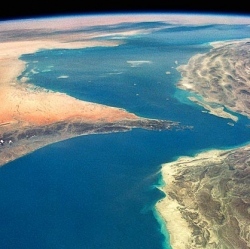
With the recent retirement of the Space Shuttle program in 2011, NASA has been in desperate need of some space taxis, vehicles designed to transport astronauts to and from the International Space Station. For the past three years, the space agency has had to rely on Russia’s Soyuz rocket to fulfill this need, which hasn’t been cheap or ideal.
But rather than build these spacecraft in house, NASA decided to outsource the problem, soliciting private American companies to come up with their own designs for ferrying NASA astronauts to lower Earth orbit. SpaceX, Boeing, and Sierra Nevada Corporation were the three top contenders for the coveted contract, and on September 16, NASA announced it would fund both SpaceX and Boeing’s designs. The two companies received a combined sum of $6.8 billion to build, test, and operate their own space taxis, which will hopefully be transporting astronauts by 2017.
While the decision was mostly met with enthusiasm and praise from experts, not everyone was so pleased with the big announcement, notably, the “loser” of the competition, the Sierra Nevada Corporation (SNC). Their Dream Chaser vehicle, which many experts thought was on par with SpaceX’s Dragon V2 capsule and Boeing’s CST-100, was overlooked for inclusion in the program. And they’re not letting it go without a fight.
On Friday, SNC filed a formal bid protest with the Government Accountability Office over NASA’s decision, claiming that one of the newly awarded contracts would “result in a substantial increased cost to the public despite near equivalent technical and past performance scores.” SNC says that extra cost will be upwards of $900 million, to be exact. The press release also calls into question NASA’s rationale for making their choices, which has been somewhat of a mystery. The space agency said it would publish an official Source Selection document, detailing how the decision was made, but a date for that release hasn’t been set.
